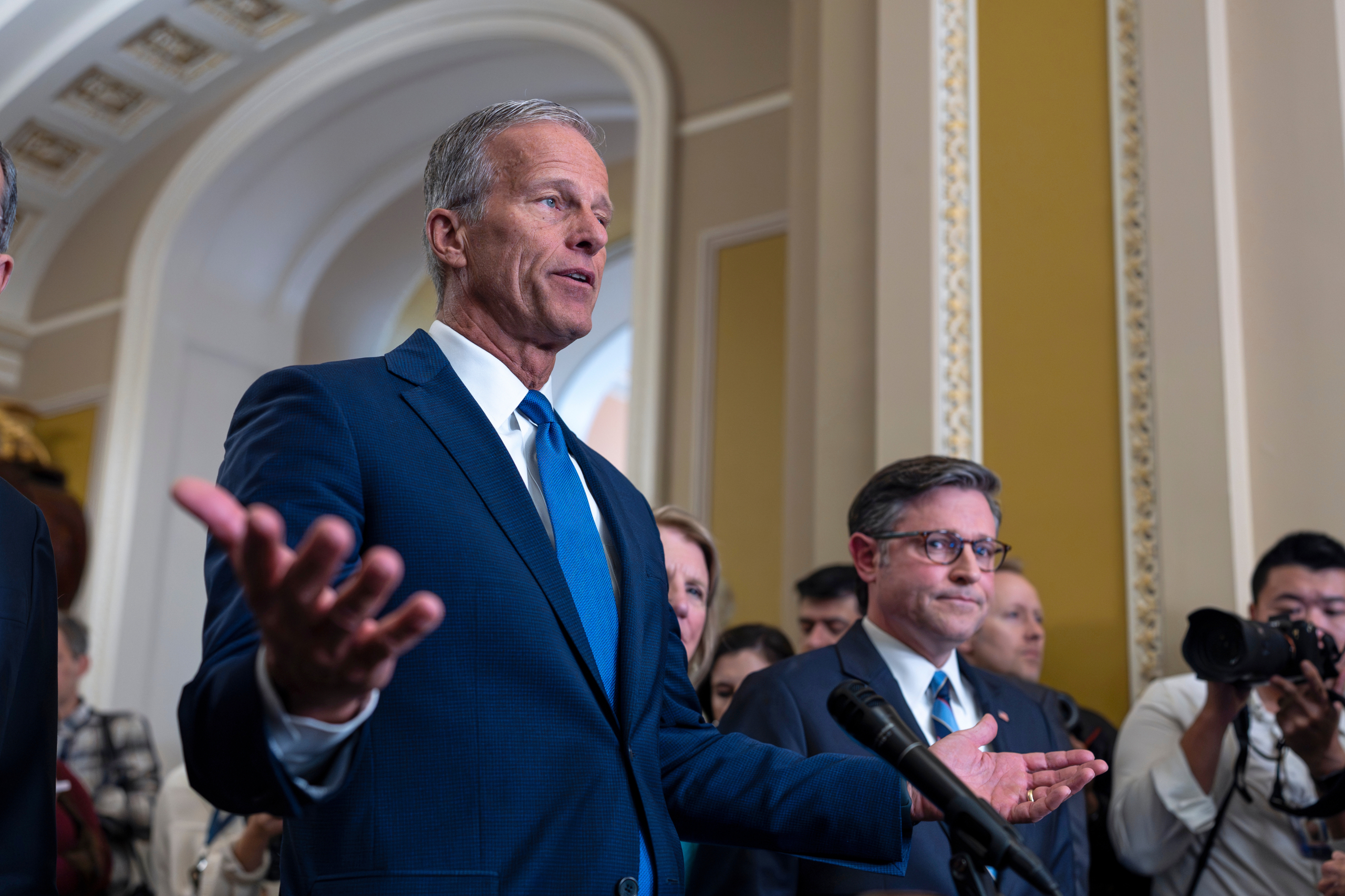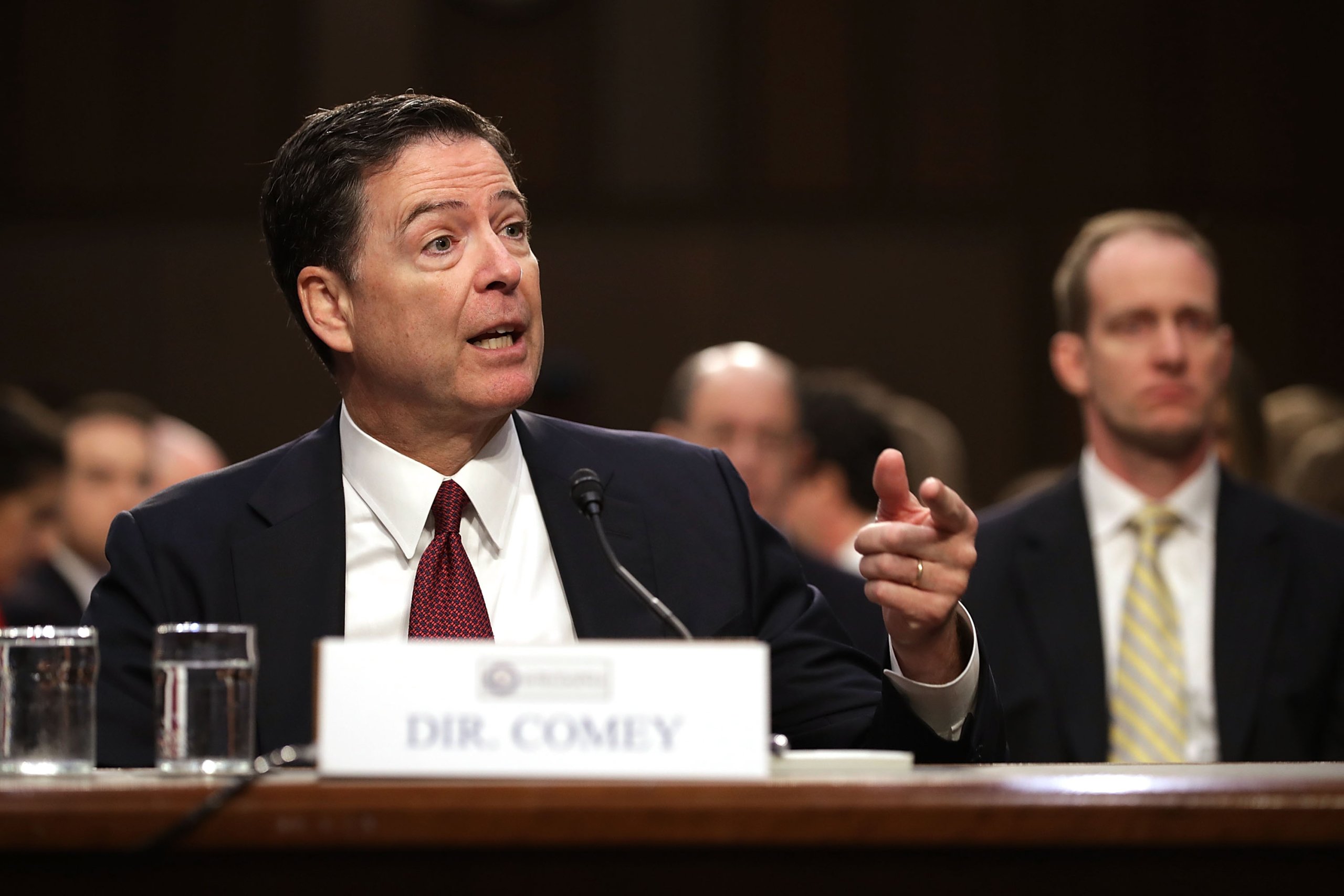Thought of the Day

Dig the well before you are thirsty so plan ahead.


Dig the well before you are thirsty so plan ahead.

Ziggy is a 3-year-old poodle mix with a big heart and plenty of pep! He’s the best of both worlds—happy to go for walks and burn off his energy, then just as content to curl up on the couch, the bed, or even the floor for a cozy nap. While he may give a few barks when someone’s at the door, he quickly settles and greets new friends with endless enthusiasm. Ziggy gets along well with other dogs (cats are still a mystery!) and would make a wonderful companion for a loving family.

Second Chance Pet Adoptions
6003 Chapel Hill Rd., Ste. 133
Raleigh, NC 27607
(919) 851-8404


By AARON BEARD AP Basketball Writer
CHARLOTTE, N.C. (AP) — Luke Loucks remembers winning an Atlantic Coast Conference Tournament title at Florida State when Mike Krzyzewski, Roy Williams and his coach, Leonard Hamilton, were sideline fixtures.
Thirteen years later, those guys have all headed into retirement, along with multiple other marquee names who weren’t even in the league when Loucks played.
Now Loucks is a 35-year-old first-time head coach for the Seminoles. He’s one of four additions to the coaching ranks in the league alongside Miami’s Jai Lucas, N.C. State’s Will Wade and Virginia’s Ryan Odom. It’s part of a continuing makeover in the ACC after losing Williams at North Carolina, Krzyzewski at Duke, Syracuse’s Jim Boeheim, Notre Dame’s Mike Brey, Miami’s Jim Larrañaga, Virginia’s Tony Bennett — and Loucks’ predecessor in Hamilton.
“There was a true backbone to this league with historic coaches,” Loucks said Wednesday during the league’s preseason media days.
“Now you look at the league, six more teams than when I played … but there’s a new wave of youthfulness, guys that have a lot of energy, that I also think will also be those legendary coaches. It’s just they’re about 20 to 30 years behind in age.”
To Loucks’ point, the ACC has been going through a sideline reset in the years since the COVID-19 pandemic.
Williams was first into retirement in April 2021, followed by fellow Hall of Famers with four-decade runs in Coach K and Boeheim in the subsequent years. Four other coaches have also ended long runs in Brey (23 years), Hamilton (23), Bennett (15) and Larrañaga (14), with Bennett joining Williams, Krzyzewski and Boeheim as coaches exiting with at least one NCAA championship on the résumé.
The average coaching tenure for ACC schools during the 2020-21 season was 13.47 years. This year it will be 4.06, with 14 of 18 schools making coaching changes darting to 2020-21.
And that leaves Clemson’s Brad Brownell, starting his 16th season, as the senior member of the bunch.
“You can be a pretty good coach, I didn’t all of a sudden get that much smarter,” Brownell said. “I’d like to think I wasn’t that much dumber in 2013 and 2014. But we didn’t have the kind of facilities and support that we needed in order to help us. So it all works both ways.
“I do think we have a great influx of talented young coaches in our league. i think you’ve got guys that can be at their schools for decades.”
Loucks and Lucas are the “youngsters” of the new quartet.
Loucks arrives from the NBA coaching ranks, starting with support roles with the Golden State Warriors — including during two of their NBA titles — and coming off a three-year run as an assistant coach with the Sacramento Kings.
Lucas, 36, coached at Texas and Kentucky before working the past three seasons under Duke’s Jon Scheyer.
That gave Lucas an up-close look at another young coach making the transition to first-time head coach while following a longtime winner. Scheyer was 35 in his first season as successor to his mentor in Krzyzewski, a five-time NCAA champion who won 1,202 games.
“So just being there and having a front-row seat for that, I think the biggest thing I took away from Jon was just the attention to detail that’s needed when starting a program,” Lucas said.
“Mine is a little bit different in the sense of building it from a clean slate, but understanding that everything you do in the beginning and the first couple of months is going to set the foundation for how the program is moving forward.”
Odom, 51, took a longer journey back to a familiar Cavaliers home after Bennett’s unexpected exit on the eve of last season.
His father, Dave, was an assistant coach at Virginia under Terry Holland during the 1980s. And Ryan served as a ball boy for home games.
He brought up those ties Tuesday, including memories of 7-foot-4 program great Ralph Sampson’s final home game in 1983 — which included Sampson missing two critical late free throws but getting a tipped-out rebound for a go-ahead basket.
“They’re all real memories for me,” Odom said.
Odom also has another notable tie to the Virginia program, though from the other sideline: He was the UMBC head coach when the Retrievers beat the Cavaliers in 2018 for the first 16-vs-1 upset in the NCAA Tournament. He later spent two years as head coach at Utah State, then the last two at VCU.
“There’s pressure with every job no matter what level you coach at,” Odom said. “This obviously is the highest level and it’s more covered and all that, so it’s more in your face from that perspective. But I don’t know that that’s necessarily going to feel any different for me.”
Then there’s the 42-year-old Wade, who is a power conference coach for a second time after his first stint at LSU ended with him fired for NCAA rules violations.
He spent two years at McNeese State, winning 28 games and upsetting Clemson to open the NCAA Tournament last year. And he landed with the Wolfpack, who fired Kevin Keatts after he followed an unexpected run to the 2024 Final Four with a 12-win crashout.
Wade has been blunt and unapologetically confident, leaning into the program’s “Red Reckoning” branding after an offseason retooling that added multiple notable transfers like Texas Tech’s Darrion Williams, Michigan State’s Tre Holloman and Ven-Allen Lubin from Wolfpack rival UNC.
“It’s going to be a reckoning for the ACC and college basketball,” Wade said last month. “You’re going to have to deal with us.”
It’s a confidence that has appealed to a rabid fan base longing for consistent basketball success, notably with runs to the 1974 and 1983 NCAA championships.
“You don’t want to be sailing against the wind,” Wade said Wednesday. “You want to get the wind behind your sails and get moving. So I think that winning in Year 1 will be good. And we’re going to win.”

LUMBERTON, N.C. (AP) — The leader of a southeastern North Carolina tribe is about to join the state legislature to succeed his brother, as the Lumbee’s efforts to attain full U.S. government recognition have gained recent momentum but still face obstacles.
Members of a Robeson County Republican Party committee voted unanimously Tuesday to recommend John Lowery to fill the state House seat held since 2023 by Jarrod Lowery, who resigned effective this week to take a job in Washington with the U.S. Interior Department. State law directs Gov. Josh Stein to formally appoint John Lowery to serve out his brother’s term representing the 47th House District through the end of 2026.
John Lowery has been chairman of the 55,000-member Lumbee Tribe of North Carolina since early 2022. He’s previously worked as a public school civics teacher and for the U.S. Agriculture Department and state Commerce Department. His jobs have included efforts to expand federal programs for Native American farmers and rural communities and build workforce development in the region.
“His years of experience serving in tribal, state, and federal government and delivering for the residents of Robeson County make him an exceptionally prepared choice,” Robeson County GOP Chairman Phillip Stephens said in a news release.
John Lowery intends to serve out the remainder of his three-year term as chairman — he was reelected to the post in 2024 — and intends to run next year for his own two-year term in the House, spokesperson Rachel Capen said Wednesday. Jarrod Lowery is now taking a job as senior adviser to the assistant secretary for Indian Affairs at the Interior Department, Capen said.
The brothers are former Lumbee Tribal Council members who have advocated for full federal recognition, which if approved could bring the Lumbee access to health care and certain federal grants, as well as the ability to create a land base such as reservations.
The Lumbee Tribe, which is already recognized by the state, applied for federal recognition in 1987. A 1956 congressional act acknowledged the Lumbee exist but denied them access to federal resources. The Office of Federal Acknowledgment determined the tribe was ineligible for recognition, but that decision was reversed in 2016. Still, legislation has been considered a quicker route to achieve recognition.
President Donald Trump issued an executive order in January directing the Interior Department to provide a plan for Lumbee recognition. While the department submitted that plan to the White House in April, it appears obtaining congressional approval remains the likely path.
The U.S. House passed last month a defense authorization bill that included full federal recognition to the Lumbee. Some other tribes still oppose the Lumbee’s recognition efforts, which comes at a time when Trump and Republican lawmakers also seek federal spending cuts.

By SAMY MAGDY, SAM MEDNICK and AAMER MADHANI Associated Press
WASHINGTON (AP) — Israel and Hamas agreed Wednesday to pause fighting in Gaza so that the remaining hostages there can be freed in the coming days in exchange for Palestinian prisoners, accepting elements of a plan put forward by the Trump administration that would represent the biggest breakthrough in months in the devastating two-year-old war.
“This means that ALL of the Hostages will be released very soon, and Israel will withdraw their Troops to an agreed upon line as the first steps toward a Strong, Durable, and Everlasting Peace,” President Donald Trump wrote on social media in trumpeting the agreement. “All Parties will be treated fairly!”
Israel and Hamas separately confirmed the contours of their deal, which drew celebratory gatherings from hostage families in Tel Aviv and cautious optimism from some in Gaza. Hamas intends to release all 20 living hostages in a matter of days, while the Israeli military will begin a withdrawal from the majority of Gaza, people familiar with the matter told The Associated Press on condition of anonymity to discuss details of an agreement that has not fully been made public.
Uncertainty remains about some of the thornier aspects of Trump’s proposal — such as whether and how Hamas will disarm, and who will govern Gaza — but the sides appear closer than they have been in several months to ending a war that has killed tens of thousands of Palestinians, destroyed most of Gaza and triggered other armed conflicts across the Middle East. The war, which began with Hamas’ deadly attack on Israel on Oct. 7, 2023, has sparked worldwide protests and brought allegations of genocide that Israel denies.
Israel is more isolated than it has been in decades and Israelis have been bitterly divided over the failure to return the hostages. Palestinians’ dream of an independent state, meanwhile, appears more remote than ever despite recent moves by major Western countries to recognize one. With the outlook bleak as the war’s two-year anniversary approached, the Trump administration put forward a plan last month that it hoped would result in a permanent end to the war and bring about a sustainable peace in the region.
Talks to hammer out a deal have been underway in Egypt since the start of the week, and by the end of the third day of negotiations, a breakthrough emerged.
“With God’s help we will bring them all home,” Israeli Prime Minister Benjamin Netanyahu proclaimed on social media shortly after Trump announced an agreement on the first phase of his plan was at hand. Netanyahu said he would convene the government on Thursday to approve the deal.
For its part, Hamas called on Trump and the mediators to ensure that Israel implements “without disavowal or delay” a deal that it said would require the withdrawal of Israeli troops from Gaza, the entry of aid into the territory and the exchange of prisoners for hostages.
It was unclear from Trump’s statement how much progress has been made on the most divisive aspects of his plan, such as Hamas’ potential disarmament — a demand Israel has insisted upon but the militant group has repeatedly refused. Hamas has long said it will not release the remaining hostages without a lasting ceasefire and guarantees the war would not resume after they are freed.
The Trump plan called for an immediate ceasefire and release of the 48 hostages that militants in Gaza still hold from their attack on Israel two years ago. Some 1,200 people were killed by Hamas-led militants, and 251 were taken hostage. Around 20 of the hostages are believed to still be alive.
In an interview on Fox News, Trump said Hamas will begin releasing hostages “probably” on Monday.
“This is more than Gaza,” he said. “This is peace in the Middle East.”
Officials have expressed concerns over how long it may take Hamas and other Palestinian militant groups holding Israelis to locate and return the remains of those believed to be dead, as required under the agreement.
Under the plan conceived by Trump, Israel would maintain an open-ended military presence inside Gaza, along its border with Israel. An international force, comprised largely of troops from Arab and Muslim countries, would be responsible for security inside Gaza. The U.S. would lead a massive internationally funded reconstruction effort in Gaza.
The plan also envisions an eventual role for the Palestinian Authority — something Netanyahu opposes. But it requires the authority, which administers parts of the West Bank, to undergo a sweeping reform program that could take years to implement.
The Trump plan is even more vague about a future Palestinian state, which Netanyahu and his family firmly reject.
Even as many details of Trump’s full plan have yet to be agreed to by both sides, some Palestinians and Israelis expressed happiness and relief at the significant progress that had been made.
“It’s a huge day, huge joy,” Ahmed Sheheiber, a Palestinian displaced man from northern Gaza, said of the ceasefire deal.
Crying over the phone from his shelter in Gaza City, he said he was waiting “impatiently” for the ceasefire to go into effect to return to his home in the Jabaliya refugee camp.
Joyful hostage families and their supporters began spilling into the central Tel Aviv square that has become the main gathering point in the struggle to free the captives. Some popped open a bottle of Champagne and cheered. Crying tears of joy, families hugged released hostages as the square continued to fill with Israelis.
Einav Zangauker, the mother of Israeli captive Matan Zangauker and a prominent advocate for hostages’ freedom, told reporters that she wants to tell her son she loves him.
“I want to smell his smell,” she said. “If I have one dream, it is seeing Matan sleep in his own bed.”
The arrival of Trump’s Middle East envoy, Steve Witkoff, and the president’s son-in-law, Jared Kushner, on Wednesday at Sharm el-Sheikh for the peace talks, which were also attended by Qatar’s prime minister, Sheikh Mohammed bin Abdulrahman Al Thani, was a sign that negotiators aimed to dive deeply into the toughest issues of the American plan to end the war. Netanyahu’s top adviser, Ron Dermer, was also present for the talks.
Trump expressed optimism earlier in the day by saying that he was considering a trip to the Middle East within a matter of days.
Yet another hint of an emerging deal came later in that event when U.S. Secretary of State Marco Rubio passed Trump a note on White House stationery that read, “You need to approve a Truth Social post soon so you can announce deal first.” Truth Social is the president’s preferred social media platform.
The note prompted Trump to proclaim, “We’re very close to a deal in the Middle East.”
This would be the third ceasefire reached since the start of the war. The first, in November 2023, saw more than 100 hostages, mainly women and children, freed in exchange for Palestinian prisoners before it broke down. In the second, in January and February of this year, Palestinian militants released 25 Israeli hostages and the bodies of eight more in exchange for nearly 2,000 Palestinian prisoners. Israel ended that ceasefire in March with a surprise bombardment.
A growing number of experts, including those commissioned by a U.N. body, have said that Israel’s offensive in Gaza amounts to genocide — an accusation Israel denies. More than 67,000 Palestinians have been killed in Gaza and nearly 170,000 wounded, according to Gaza’s Health Ministry.
The ministry, which doesn’t differentiate between civilians and combatants but says around half of the deaths were women and children, is part of the Hamas-run government. The United Nations and many independent experts consider its figures to be the most reliable estimate of wartime casualties.
In the Gaza Strip, where much of the territory lies in ruins, Palestinians have been desperate for a breakthrough. Thousands fleeing Israel’s latest ground offensive in northern Gaza and Gaza City have set up makeshift tents along the beach in the central part of the territory, sometimes using blankets for shelter.
Ayman Saber, a Palestinian from Khan Younis, reacted to the ceasefire announcement by saying he plans to return to his home city and try to rebuild his house, which was destroyed last year by an Israeli strike.
“I will rebuild the house, we will rebuild Gaza,” he said.
___
Associated Press writers Eric Tucker in Washington, Sarah El Deeb in Beirut and Melanie Lidman in Tel Aviv contributed to this report. Magdy reported from Cairo and Mednick from Tel Aviv, Israel.

By STAN CHOE AP Business Writer
NEW YORK (AP) — Wall Street got back to rising on Wednesday, while the price of gold pushed further past $4,000 per ounce.
The S&P 500 climbed 0.6% a day after snapping a seven-day winning streak and set its latest all-time high. The Dow Jones Industrial Average edged down by 1 point, or less than 0.1%, while the Nasdaq composite rose 1.1% to its own record.
Trading has been relatively muted recently following the U.S. government’s latest shutdown. The closure has delayed the release of several major economic reports that usually move the market. Stocks have been drifting without them or other signals to change expectations for cuts to interest rates by the Federal Reserve, one of the major reasons the stock market has surged since April.
Another force that’s pushed the market to records is the frenzy around artificial-intelligence technology.
Advanced Micro Devices jumped another 11.4% to add to its rally from earlier in the week, when it announced an AI-related deal. AMD was the best performing stock in the S&P 500.
Right behind was Dell Technologies, which piled more gains onto its own rally from Tuesday, when it talked up its growth opportunities related to AI. Dell rose 9.1%.
Poet Technologies climbed 17% and likewise added to its surge from Tuesday, when it said it raised $75 million in investment to accelerate its growth. The company sells high-speed optical engines and other products used in the AI systems market.
AI-related stocks have broadly been on a tear. Nvidia has soared nearly 41% so far this year. Oracle is up 73.2% over the same time, while Palantir Technologies has more than doubled with a nearly 143% surge.
The performances have been so strong that criticism is rising about prices having gone too far, like they did during the 2000 dot-com mania. That bubble ultimately imploded, and the S&P 500 halved in value.
Proponents say AI stocks are backed by big growth in profits, something that many dot-com stocks didn’t have at the turn of the millennium. But the Bank of England nevertheless warned Wednesday of the rising risk that tech stock prices pumped up by the AI boom could face a “sudden correction.”
“On a number of measures, equity market valuations appear stretched, particularly for technology companies focused on Artificial Intelligence,” policymakers at the U.K. central bank said in a report. With Big Tech companies accounting for an increasingly outsized share of stock market indexes, stocks are “particularly exposed should expectations around the impact of AI become less optimistic.”
Elsewhere on Wall Street, AST SpaceMobile jumped 8.6% after Verizon Communications agreed to use its space-based network to offer service to cellular customers when needed, starting in 2026. Verizon slipped 0.2%.
On the losing end of Wall Street was Jefferies Financial Group, which fell 7.9%. The investment bank disclosed some details about its exposure to First Brands Group, a supplier of aftermarket auto parts that filed for Chapter 11 bankruptcy protection last week.
All told, the S&P 500 rose 39.13 points to 6,753.72. The Dow Jones Industrial Average slipped 1.20 to 46,601.78, and the Nasdaq composite rose 255.02 to 23,043.38.
Gold, meanwhile, continued its stellar year and rose further past $4,000 per ounce. Investors have traditionally seen gold as a way to protect against rising inflation, and its price has soared more than 50% this year.
Worries are high about big debt loads that the U.S. and other governments are building, which threaten to push inflation higher. Political instability around the world, uncertainty created by President Donald Trump’s tariffs and expectations for rate cuts by the Fed are also pushing up interest in gold.
The Fed cut its main interest rate for the first time this year last month, and it hinted that more reductions may be on the way. Minutes from that last meeting released on Wednesday showed growing concerns among Fed officials about the slowing job market.
Lower rates could help boost the job market and economy, but Fed officials say they’re also staying mindful of inflation, which remains above the Fed’s target of 2%. Lower rates can give inflation more fuel.
In stock markets abroad, indexes rose in Europe following a weaker finish in Asia.
In the bond market, the yield on the 10-year Treasury eased to 4.12% from 4.14% late Tuesday.
___
AP Business Writers Matt Ott, Elaine Kurtenbach and Kelvin Chan contributed.

By MARIA SHERMAN AP Music Writer
NEW YORK (AP) — Dolly Parton “ain’t dead yet,” the country superstar said on social media Wednesday following public speculation about her health.
“There are just a lot of rumors flying around. But I figured if you heard it from me, you’d know that I was okay,” the 79-year-old singer said in a new two-minute video posted on Instagram. “I’m not ready to die yet. I don’t think God is through with me. And I ain’t done working.”
Her post, which appeared on numerous of Parton’s social media accounts and her website, was captioned, “I ain’t dead yet.”
Late last month Parton postponed her first Las Vegas residency in 32 years, citing “health challenges.”
She was scheduled to perform six shows at The Colosseum at Caesars Palace for “Dolly: Live in Las Vegas” between Dec. 4 and Dec. 13, overlapping with the National Finals Rodeo. Her dates have been moved to next year — Sept. 2026.
She did not provide specific details at the time, writing, “As many of you know, I have been dealing with some health challenges, and my doctors tell me that I must have a few procedures. As I joked with them, it must be time for my 100,000-mile check-up, although it’s not the usual trip to see my plastic surgeon!”
In the new video clip shared Wednesday, Parton is seen sitting on a set speaking directly to camera, telling her audience that she’s about to record a few commercials for the Grand Ole Opry, which is celebrating its 100th anniversary this year.
“Everyone thinks that I am sicker than I am. Do I look sick to you? I’m working hard here! Anyway, I wanted to put everybody’s mind at ease, those of you who seem to be real concerned, which I appreciate,” she continued. “And I appreciate your prayers because I’m a person of faith. I can always use the prayers for anything and everything.”
On Tuesday, a Facebook posted shared by her sister Freida Parton escalated concerns around Parton’s health when she wrote that she had been “up all night praying for my sister, Dolly.” Hours later, Freida Parton followed up with another post.
“I want to clear something up. I didn’t mean to scare anyone or make it sound so serious when asking for prayers for Dolly,” she wrote. “She’s been a little under the weather, and I simply asked for prayers because I believe so strongly in the power of prayer.”
Parton offered her own clarification in the video, referencing her late husband of nearly 60 years Carl Dean, who died earlier this year at age 82.
“I want you to know that I’m OK. I’ve got some problems as I’ve mentioned. Back when my husband Carl was very sick, that was for a long time, and then when he passed, I didn’t take care of myself. So I let a lot of things go that I should’ve been taking care of,” she said. “So anyway, when I got around to it, the doctor said ‘We need to take care of this. We need to take care of that.’ Nothing major but I did have to cancel some things so I could be closer to home, closer to Vanderbilt, where I’m kind of having a few treatments here and there.”
And in true Parton fashion, she ended with a joke. “But I wanted you to know that I’m not dying. Did you see that AI picture of Reba (McEntire) and me, oh Lordy! I mean, they had Reba at my death bed, and we both look like we need to be buried,” she laughed.
“If I was really dying, I don’t think Reba would be the one at my death bed. She might come visit me earlier.

By WILLIAM GIM The Chronicle
DURHAM, N.C. (AP) — A team at Duke University has secured a $15 million federal grant to expand an artificial intelligence model designed to predict mental illness in adolescents.
The Duke Predictive Model of Adolescent Mental Health (Duke-PMA), co-developed by Professor of Psychiatry Jonathan Posner, Assistant Professor of Biostatistics & Bioinformatics Matthew Engelhard and AI Health Fellow Elliot Hill, is an AI-based tool that assesses factors related to adolescent mental health.
The model is used to predict who is most likely to develop a mental illness within a year. It also identifies the key factors driving those predictions, offering the potential to guide targeted preventive interventions.
“In the way that psychiatry is currently practiced, it tends to be reactive, meaning we wait until someone’s developed a psychiatric illness, and then we institute treatment,” Posner said. “So (the model) would really be a paradigm change in psychiatry from a reactive to a proactive approach.”
The model achieved 84% accuracy in identifying adolescents of age 10 to 15 who are at risk for future serious mental health issues and maintained consistent performance across socioeconomic status, race and sex. This accuracy was achieved using only questionnaires, instead of expensive imaging or blood tests, making the model a highly scalable and accessible assessment tool.
The model maintained high accuracy when limited to factors that can be directly influenced through clinician intervention, such as sleep disturbances and family conflict. Its results could offer clinicians actionable insights to guide prevention and intervention strategies before illness develops.
“So a patient comes into their clinic, they do this quick assessment, and then the primary care doctor gets a report saying, this child in front of me has a 90% chance of developing an illness within a year, and these are the factors that are driving that prediction,” Posner said.
Securing the $15 million federal grant marks a turning point in the project’s development. “This is exactly the pathway to get it in (the clinicians’) hands and actually identify people early and connect them with services and support that can hopefully bend that trajectory,” Engelhard said.
The next phase of the project will enroll 2,000 adolescents from rural clinics in North Carolina, Minnesota and North Dakota.
“We wanted to go to places where the resources for mental health care are pretty limited across the board,” Posner said. “Having an automated tool like this, while it would be helpful virtually anywhere, would be particularly helpful in a rural setting, which doesn’t have the mental health resources that you’d see in an urban clinic.”
The team will conduct an observational study, using the Duke-PMA to assess participants and generate predictions. Families will be recontacted a year later for detailed psychiatric evaluations to determine whether the model’s predictions prove accurate.
The use of artificial intelligence in medicine may spark both excitement and unease, particularly when applied to sensitive areas like adolescent mental health. For one, to address the risk of false positives, Hill emphasizes that Duke-PMA is designed as a supportive tool, not a replacement for clinical judgment.
“We’re very serious about protecting patients’ privacy, both in the context of the study that we’re doing, as well as more broadly, going forward,” Engelhard said. “And so this is information that would be between you and your care providers.”
This approach attempts to balance innovation with caution, enhancing care while preserving essential human presence during clinical judgment.
“This type of research would not be possible unless you had people from lots of different disciplines collaborating together … I think Duke is unusually well positioned for that type of work,” Posner said.
___
This story was originally published by The Chronicle at Duke University and distributed through a partnership with The Associated Press.

By LISA MASCARO, MARY CLARE JALONICK and JOEY CAPPELLETTI Associated Press
WASHINGTON (AP) — Tours at the Capitol have come to a standstill. The House is keeping its doors closed, while the Senate is stuck in a loop of failed votes on a rejected plan to reopen the government. President Donald Trump is threatening to mass fire federal workers and refuse back pay for the rest.
As the government shutdown enters a second week, there’s no discernible endgame in sight.
“You have to negotiate,” Sen. Bernie Sanders, the independent from Vermont, argued late into the evening on the Senate floor. “That’s the way it works.”
But no negotiations, at least publicly, are underway.
The Republicans who have majority control in Congress believe they have the upper hand politically, as they fend off Democratic demands to quickly fund health insurance subsidies as part of any plan to end the shutdown.
But so have Democrats dug in, convinced that Americans are on their side in the fight to prevent the looming health care price spikes and blaming Trump for the shutdown.
Behind the scenes, though, signs of discomfort are apparent.
A loosely formed collection of senators, Republicans and Democrats, have bantered about options for addressing the health insurance problem. One, Sen. Susan Collins of Maine, has offered her own plans.
Two prominent Republicans, Rep. Marjorie Taylor Greene of Georgia and Sen. Josh Hawley of Missouri, have said something must be done to stop the health insurance rate hikes.
And Trump himself signaled he was open to negotiating with Democrats over their demands to save health care subsidies. Earlier this week, the president said that talks were already underway as he wants “great health care” for the people, only to shift his tone hours later to say the government must reopen first.
“I spoke to the president at length yesterday about that very thing,” House Speaker Mike Johnson said about his Monday conversation with Trump. “And yes, he wants to solve problems.”
At its core, the debate is over the health care issue that has tangled Congress for years, and in particular, the Affordable Care Act, also known as Obamacare, that Trump tried, and failed, to repeal and replace during his first term at the White House.
Congress increased the federal subsidies that help people purchase private insurance policies on the Affordable Care Act exchanges during the COVID-19 pandemic. The federal aid was popular, and it boosted ACA enrollment to a record 24 million people. Those enhanced subsidies are set to expire at year’s end.
Republicans say Congress can deal with the health insurance issue in the months ahead. Democrats are fighting to resolve the problem now, as people are receiving notices of higher policy rates for the new year.
Senate Majority Leader John Thune, the Republican from South Dakota, has said there may be a path forward — once the government reopens.
“We were always planning to have those discussions,” said Johnson, R-La.
But Democrats argue that Republicans failed to address the expiring health care subsidies this summer when they approved Trump’s signature bill into law, commonly referred to as the One Big Beautiful Bill Act.
Democrats doubt that with Johnson keeping the House out of legislative session, and sending lawmakers home to work in their districts, the Republicans will quickly come back to work on resolving the health care problem.
“Tens of millions of people are about to experience dramatically increased health insurance costs — how is that acceptable in the wealthiest country in the history of the world?” said House Democratic Leader Hakeem Jeffries of New York.
“A health care crisis is unfolding before the eyes of the American people because of the actions taken by the GOP — they’re on vacation,” he said.
While federal employees have often missed paychecks during shutdowns, and the first pay period is coming in the next week, Trump is now threatening to do away with guaranteed back pay. It would be a stark departure from what is normal. The White House budget office, under Russ Vought, argues the law says back pay is not automatic, and Congress would need to approve it.
At the same time, Thune’s strategy of trying to peel off more Democratic senators to join Republicans to advance the House-passed bill that would fund the government without a health care fix has not worked.
In fact, the parties are pulling further apart. Sen. Angus King, the independent from Maine who has voted several times with Republicans to fund the government, has said he may change his vote, joining most Democratic senators who are holding out for a better deal.
The Senate is expected to try again Wednesday to advance the House GOP’s bill, but it is expected to fail again.
Each side has dug in, convinced they’re on the right side of the shutdown fight, in part because that’s what their internal data shows.
Over the weekend, Senate Democrats were briefed on information suggesting their health care messaging was resonating with voters. The memo from Senate Majority PAC was circulated to House Democrats and campaigns nationwide on Tuesday, with a clear directive: hold the line.
“It would be a mistake to take the pressure off Republicans,” the memo says.
Republicans, meanwhile, are sticking to their own playbook. A memo from the House GOP’s campaign arm urged candidates to focus on the shutdown’s economic impact, including a district-level breakdown of who would be affected by a government shutdown.
Each side has framed the shutdown fight as a precursor to the 2026 midterm elections.
___
Associated Press writers Kevin Freking and Stephen Groves contributed to this report.

By ERIC TUCKER, ALANNA DURKIN RICHER and MICHAEL KUNZELMAN Associated Press
ALEXANDRIA, Va. (AP) — Former FBI Director James Comey pleaded not guilty Wednesday to face a criminal case that has thrown a spotlight on the Justice Department’s efforts to target adversaries of President Donald Trump.
The arraignment is expected to be brief, but the moment is nonetheless loaded with significance given that the case has amplified concerns the Justice Department is being weaponized in pursuit of Trump’s political enemies and is operating at the behest of a White House determined to seek retribution for perceived wrongs against the president.
Comey entered a not guilty plea through his lawyer at the federal courthouse in Alexandria, Virginia, to allegations that he lied to Congress five years go. The plea kick-starts a process of legal wrangling in which defense lawyers will almost certainly move to get the indictment dismissed before trial, possibly by arguing the case amounts to a selective or vindictive prosecution.
The indictment two weeks ago followed an extraordinary chain of events that saw Trump publicly implore Attorney General Pam Bondi to take action against Comey and other perceived adversaries. The Republican president also replaced the veteran attorney who had been overseeing the investigation with Lindsey Halligan, a White House aide who had never previously served as a federal prosecutor. Halligan rushed to file charges before a legal deadline lapsed despite warnings from other lawyers in the office that the evidence was insufficient for an indictment.
The two-count indictment alleges that Comey made a false statement to the Senate Judiciary Committee on Sept. 30, 2020, by denying he had authorized an associate to serve as an anonymous source to the news media and that he obstructed a congressional proceeding. Comey has denied any wrongdoing and has said he was looking forward to a trial. The indictment does not identify the associate or say what information may have been discussed with the media, making it challenging to assess the strength of the evidence or to even fully parse the allegations.
Though an indictment is typically just the start of a protracted court process, the Justice Department has trumpeted the development itself as something of a win, regardless of the outcome. Trump administration officials are likely to point to any conviction as proof the case was well-justified, but an acquittal or even dismissal may also be held up as further support for their long-running contention the criminal justice system is stacked against them.
The judge randomly assigned to the case, Michael Nachmanoff, was nominated to the bench by President Joe Biden’s Democratic administration and is a former chief federal defender. Known for methodical preparation and a cool temperament, the judge and his background have already drawn Trump’s attention, with the president deriding him as a “Crooked Joe Biden appointed Judge.”
Besides Comey, the Justice Department is also investigating other foes of the president, including New York Attorney General Letitia James and Democratic Sen. Adam Schiff of California.
Several Comey family members arrived in court Wednesday morning ahead of the arraignment, including his daughter Maurene, who was fired by the Justice Department earlier this year from her position as a federal prosecutor in Manhattan, as well as Troy Edwards Jr., a son-in-law of Comey’s who minutes after Comey was indicted resigned his job as a prosecutor in the Eastern District of Virginia — the same office that filed the charges.
The indictment was the latest chapter in a long-broken relationship between Trump and Comey.
Trump arrived in office in January 2017 as Comey, appointed to the FBI director job by President Barack Obama four years earlier, was overseeing an investigation into ties between Russia and Trump’s 2016 presidential campaign.
The dynamic was fraught from the start, with Comey briefing Trump weeks before he took office on the existence of uncorroborated and sexually salacious gossip in a dossier of opposition research compiled by a former British spy.
In their first several private interactions, Comey would later reveal, Trump asked his FBI director to pledge his loyalty to him and to drop an FBI investigation into his administration’s first national security adviser, Michael Flynn. Comey said Trump also asked him to announce that Trump himself was not under investigation as part of the broader inquiry into Russian election interference, something Comey did not do.
Comey was abruptly fired in May 2017 while at an event in Los Angeles, with Trump later saying he was thinking about “this Russia thing” when he decided to terminate him. The firing was investigated by Justice Department special counsel Robert Mueller as an act of potential obstruction of justice.
Comey in 2018 published a memoir, “A Higher Loyalty,” that painted Trump in deeply unflattering ways, likening him to a mafia don and characterizing him as unethical and “untethered to truth.”
Trump, for his part, continued to angrily vent at Comey as the Russia investigation led by Mueller dominated headlines for the next two years and shadowed his first administration. On social media, he repeatedly claimed Comey should face charges for “treason” — an accusation Comey dismissed as “dumb lies” — and called him an “untruthful slime ball.”
___
Tucker reported from Washington.